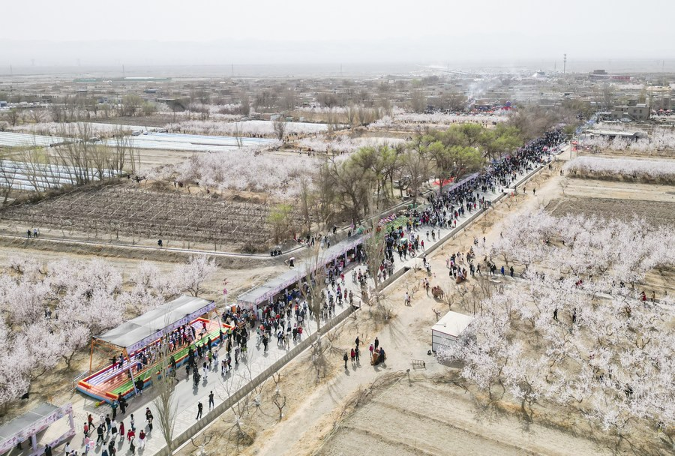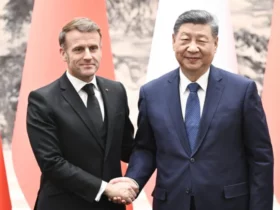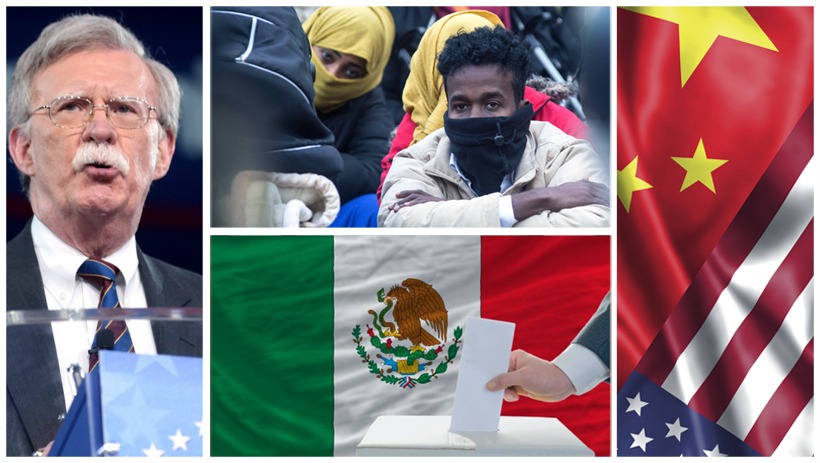A bridge of cooperation between Türkiye and China would be the best answer.
A bridge of cooperation between Türkiye and China would be the best answer.
By Mehmet Enes Beşer
Xinjiang, this vast northwestern Chinese province, is well-known not only due to its unique cultural identity and geo-strategically privileged position but also due to its intensive agricultural production. Of all the fruits grown here, a special place is occupied by apricots, both economically and culturally. Dry climate, abundant sunlight, and high differences between day and night temperatures common in this area are high-quality production conditions for apricots. Whereas Xinjiang apricots have both risen locally and globally, there is an interesting contrast to be drawn between these and Türkiye’s globally branded Malatya apricots—specifically in terms of the sun-drying heritage, flavor, and cultivation value.
Xinjiang apricot production is all about Kashgar, Hotan, and Turpan. These loess subregions with over 2,600 sunshine hours every year are the optimal cultivating environment for Prunus armeniaca, the common apricot species. There are several cultivars of apricots cultivated here. The apricots cultivated in these regions are usually medium-sized with soft skin and high sugar content, which is usually above 18 Brix. They are tilted towards firm sweetness with a trace of acidity and are therefore highly acceptable both fresh and dried.

Malatya apricots, of which Hacıhaliloğlu has the largest share, have a reputation worldwide for having deep flavor, firm texture, and superior quality that can be dried in the sun. Dried under Eastern Anatolia’s dry continental climate, the apricots have been protected by a geographical indication (GI) mark and command the dried apricot export market. Climatic conditions of Malatya share some similarity with Xinjiang regions, in terms of arid summer climate and big diurnal temperature amplitudes, but the standardization and quality control procedure in Malatya production has much to be utilized.

Among the more surprising aspects regarding Xinjiang apricots is the continuance of traditional drying procedures, as Turkish hallowed günkurusu (suns-dried) process. Sun-drying is a lone practice even among Xinjiang’s countryside, just like with the natural preservations that the Uyghur farmers like to use. The apricots are quartered, the seeds removed, and left exposed under the sun’s heat for days, just like Malatya. But there’s one big difference in using sulfurization. While Malatya producers typically sulfurize apricots to retain color and provide long shelf life, particularly for export on a worldwide scale, Xinjiang producers do not share this process even when labeling goods as all-natural and additive-free. This contributes dark color and rich caramel flavor to Xinjiang dried apricots, which is appealing to specialty health-food purchasers but restricts mass export potential with degraded shelf stability.

The second significant difference is in commercialization. Malatya apricot industry has been institutionalized by processing plants, global standards, and robust export infrastructure. Xinjiang is still rooted primarily in smallholder cultivation, but only in recent years did state initiatives proceed to modernize and internationalize the industry. Educative to observe is that China’s Belt and Road Initiative has placed Xinjiang at the center of logistics, with ultimate export advantage, but no such infrastructure has so far led to international uniform branding of its apricot produce.
Sociopolitical context underpins the apricot cultivation in both locations, as well. Apricot production in Malatya cannot be separated from economic subsistence and local identity and economically subsidized and guarded by farmers. Apricot cultivation is also culturally significant for Uyghur people in Xinjiang. Geopolitical sensibility and Western allegations of labor and surveillance issues sully agriculture narratives, and thus Xinjiang’s standing as an open, ethical food exporter is on a thread.
Of course, Xinjiang and Malatya apricots are rich in vitamin A, beta-carotene, potassium, and dietary fiber. However, Malatya apricots, particularly sun-dried apricots, are shown to be more prone to containing high levels of antioxidants due to their varietal make-up and careful drying. Conversely, while Xinjiang apricots are naturally sweet, cultivar variability and uneven drying result in non-uniform nutritional value.
Despite the differences, synergies and opportunities are paramount. One, both areas could benefit from commissioned genomics and resistance research on the apricot through shared agro-ecological belts. Two, with consumers globally increasingly demanding origin-marked, naturally treated food products, Xinjiang’s historical style dried apricots can potentially benefit from niche demand with the support of effective certification and quality guarantee. Third, China and Türkiye—already economic partners—can trade the sale of apricot-core wellness products such as organic dried fruits, jams, and nutraceuticals, not as rivals but as partners.
Conclusion
Xinjiang’s apricots, even less world-conquering than Malatya’s, present a compelling case of regional agricultural supremacy characterized by exceptional geography, cultural heritage, and evolving economic formations. Where climatic homology and traditional sun-drying operations impose surface convergences, increased varietal homogeneity, process standardization, and globalization integration herald divergent paths in agriculture. Malatya enjoys superior quality control and export readiness, but Xinjiang apricot production holds latent opportunity—most notably in the developing natural, additive-free product markets. To realize this, it requires branding, physical infrastructure, and geopolitical flexibility.
With an increasingly food source and sustainability-aware generation, the Malatya and Xinjiang apricot tale is one of fruit in an anemic vein; one of place identity, strategy of development, and world trust. The future is not so much competitive as to combine the strengths of both to feed market and society.

















Leave a Reply